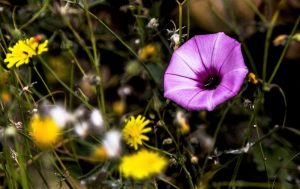Biome
How is it possible to identify a particular place as e.g. a desert, a forest or a jungle? It is the geographic characteristics that will determine what type of biome it is regardless of the place in the world in which this geographic area is located.
What is a biome?
A biome, also called a bioclimatic landscape, is a large geographical area in which species of animals and plants coexist under specific climatic conditions. The living beings that form part of a biome are not only closely related to each other but also to the environment in which they live. All this contributes to environmental ecological balance, which is indispensable for proper state of the ecosystem.
Biome characteristics
Each biome is defined on the basis of its characteristics, these are the geographical conditions, as they generate a flora and fauna suitable for the habitat. These factors contribute to ecosystem balance. Geographical factors influencing biomes are presented below:
- Latitude: Determines the amount of heat in a specific area due to its proximity to the Equator line, the closer it is, the more heat there will be.
- Rainfall: The amount of rain that takes place in an area annually determines whether it would be humid, semi-arid or arid.
- Altitude: Determines the distance from the zone compared to sea level.
- Temperature: Refers to the heat degree in a certain place, factor that influences depending on the other factors.
- Relief: It is determined due to the irregularities formed in the terrestrial surface of the zone.
Classification and types of biomes
They can be defined from their predominant vegetation and fauna, determined by climatic and geographical factors. They can be both terrestrial and aquatic.
Terrestrial biomes
These biomes can have many different characteristics depending on the climate in which they are found and the latitude and altitude. Among the main terrestrial biomes, they can be mentioned:
- Deserts: Characterized by high temperatures and low rainfall, being three quarters of the year drought. Infertile relief in its majority, what allows a xerophilic flora, characterized by having thorns, superficial roots, like the cactus. The fauna is adapted to drought and high levels of heat, in effect, these have reserve mechanisms to survive in this environment.
- Forests: These can be subdivided into tropical humid forests, tropical dry forests and savannas, Mediterranean forests, temperate humid forests and mixed forests. Tropical humid forests and temperate humid forests are characterized by benign climates that have large numbers of oaks and elms. The Mediterranean forests, if any, are surrounded by the Mediterranean Sea, with flora adapted to the heat.
- Jungles: These areas are located near Ecuador, have abundant flora, such as tall trees with vegetation underneath. A diverse amount of species, both in flora and fauna. Its humid climate, which varies between 18 and 29 °C provides regular rainfall, which keeps its fauna healthy.
- Savannas: Also known as a tropical dry forest, there are two seasons in this area, drought and rain and its temperature varies between 26°C and 28°C. Because of their flora, they can be classified into savannas with bushes with large extensions of herbaceous trees; savannas with large manifestations of trees, whether palms or woody trees; and finally, open savannas that are made up of herbaceous vegetation.
- Tundra: They are located in Russia and Arctic territories, at the tip of the American and Eurasian continents, and areas of very high mountains. Long winters with extremely cold temperatures predominate; low precipitation, mainly in the form of snow. Its fauna is composed of hibernating and migratory animals. It is important to emphasize that very few animal and plant species can survive in these biomes. Humans also have difficulty adapting to these ecosystems.
Aquatic biomes
Aquatic biomes are characterized by factors other than terrestrial, as they depend on depth, temperature and water regime. Among the main aquatic ecosystems are:
- Freshwater aquaculture: Characterized by freshwater organisms that live in it. The aquatic fauna and flora is very abundant and diverse and includes lakes, lagoons, streams and estuaries.
- Seafarers: The difference between these biomes is that they are made up of salt water, which makes it the most extensive biome on the planet. This includes seas, oceans, estuaries and coral reefs.
However, in this simple classification, the World Wide Fund for Nature achieves the classification of biomes according to WWF, which results in up to 33 different types of biomes. This distribution is accomplished by being terrestrial, with 14 subdivisions; freshwater biomes, with 14 subdivisions; and marine biomes, with 7 subdivisions.
How to cite this article?
Briceño V., Gabriela. (2019). Biome. Recovered on 4 January, 2025, de Euston96: https://www.euston96.com/en/biome/










